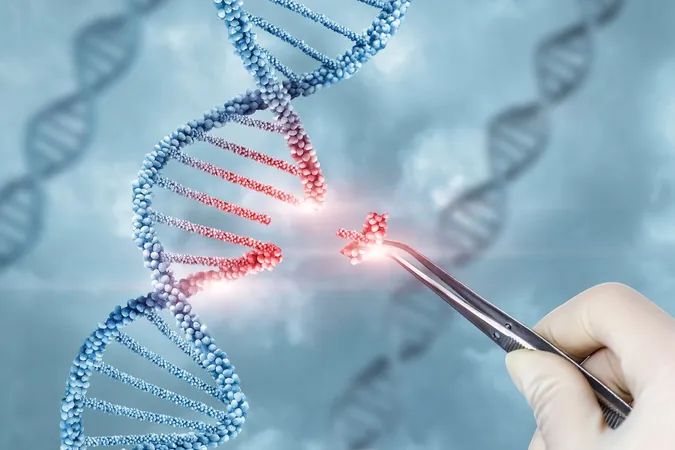
Revolutionary CRISPR Treatment Could End Daily Struggles for Hereditary Angioedema Patients!
2024-11-13
Author: Wei Ling
Introduction
In an exciting breakthrough for patients suffering from hereditary angioedema (HAE), a single administration of a CRISPR-Cas9-based gene editing therapy known as NTLA-2002 may eliminate the need for lifetime daily medication. This innovative approach offers hope to many affected by this rare genetic disorder.
Understanding Hereditary Angioedema (HAE)
HAE is a distressing inherited condition characterized by the accumulation of fluid outside blood vessels, resulting in abrupt swelling in areas like the face, limbs, and even the airway. The consequences can be severe, including life-threatening complications from airway obstruction. With varying severity among patients, HAE can lead to significant impacts on quality of life and, in some cases, can be fatal.
Clinical Trial Findings on NTLA-2002
Recent findings from a Phase 2 clinical trial, published in the New England Journal of Medicine and presented at the American College of Allergy, Asthma & Immunology's annual meeting, shed light on the potential of NTLA-2002. In the trial, 27 participants received two doses of the CRISPR therapy, with outcomes assessed against a placebo group. Remarkably, both dosages significantly reduced angioedema attacks and resulted in a sustained decrease in levels of kallikrein, an enzyme linked to the swelling response.
Dr. Hilary Longhurst, a senior medical officer at Auckland District Health Board, emphasized the importance of this reduction, stating, 'Kallikrein acts as a messenger that triggers swelling. The fact that we can reduce its presence tells us we're on the right track.' This revelation could transform how HAE is managed, moving from merely controlling symptoms to potentially curing the underlying condition.
Mechanism of Action of NTLA-2002
NTLA-2002 is administered intravenously and targets the gene responsible for producing kallikrein B1, effectively lowering its protein levels in the plasma. The study was designed to compare responses to a single dose of either 25 mg or 50 mg against a placebo, over a primary observation period of 16 weeks, followed by an extended 88-week follow-up.
Results of the Study
Data revealed that patients receiving the treatment saw a drastic drop in their monthly attack rates—down by 78% with the 25 mg dose and 79.5% with the 50 mg dose, while the placebo group showed only a minor reduction.
Encouragingly, a significant number of participants remained attack-free during the first observation period: four patients on the lower dose and eight on the higher dose experienced no additional attacks, compared to none in the placebo group.
Limitations and Future Directions
Despite the promising outcomes, researchers acknowledged the limitations of the study, including its small sample size and short duration, as well as a lack of diversity in the trial participants’ race and ethnicity compared to the broader population affected by HAE.
Dr. Danny Cohn from Amsterdam University Medical Center expressed optimism, stating, 'For decades, patients with HAE had very few options to manage their condition. The idea of a potential, functional cure after just one treatment is a monumental leap forward for patients and physicians alike.'
Conclusion
As this groundbreaking treatment moves toward further trials and potential approval, the world watches in anticipation, hopeful for a future where HAE patients can lead their lives without the burden of daily medication. Stay tuned for more updates on this life-changing therapy!
 Brasil (PT)
Brasil (PT)
 Canada (EN)
Canada (EN)
 Chile (ES)
Chile (ES)
 España (ES)
España (ES)
 France (FR)
France (FR)
 Hong Kong (EN)
Hong Kong (EN)
 Italia (IT)
Italia (IT)
 日本 (JA)
日本 (JA)
 Magyarország (HU)
Magyarország (HU)
 Norge (NO)
Norge (NO)
 Polska (PL)
Polska (PL)
 Schweiz (DE)
Schweiz (DE)
 Singapore (EN)
Singapore (EN)
 Sverige (SV)
Sverige (SV)
 Suomi (FI)
Suomi (FI)
 Türkiye (TR)
Türkiye (TR)